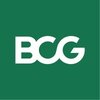
i
Ernst & Young
Filter interviews by
Ernst & Young CA Article Interview Questions and Answers
Ernst & Young CA Article Interview Experiences
1 interview found
Interview Questionnaire
6 Questions
- Q1. Why was the New Companies Act 2013 introduced in place of Companies Act 1956?
- Ans.
The New Companies Act 2013 was introduced to modernize and improve corporate governance in India.
The Companies Act 1956 was outdated and needed to be replaced with a more comprehensive and contemporary legislation.
The new act aimed to align Indian corporate laws with international standards and best practices.
It introduced several new provisions to enhance transparency, accountability, and investor protection.
The Act i...
- Q2. List out all the Accounting Standards that you know of.What is your favorite?Mention any 2 or 3
- Q3. Once you choose your favorites, questions will be asked on those( and others too)
- Q4. What are the differences b/w Purchase Method and Pooling of Interests Method in Accounting of Amalgamation(AS 14)?
- Ans.
The Purchase Method and Pooling of Interests Method are two different accounting methods used for amalgamations.
Purchase Method involves recording the amalgamation as an acquisition, with the acquiring company recognizing the fair value of the assets and liabilities of the acquired company.
Pooling of Interests Method involves combining the financial statements of the merging companies as if they had always been a singl...
- Q5. A case study was asked on AS 19 which was of CA Final.I just answered by stating the definitions of Operating Lease and Finance Lease and made an attempt which proved to be wrong
- Q6. State AS 4 AND AS 5
- Ans.
AS 4 and AS 5 are Accounting Standards issued by the Institute of Chartered Accountants of India (ICAI).
AS 4: Contingencies and Events Occurring After the Balance Sheet Date
AS 5: Net Profit or Loss for the Period, Prior Period Items and Changes in Accounting Policies
Interview Preparation Tips
Experience: It was a fairly easy test based on Logical Reasoning,Basic Mathematics and General Questions on Accounting.
Tips: A little brush up on the above mentioned areas a few days before the interview should suffice.
Duration: 60 minutes minutes
Round: HR Interview
Experience: They had come on campus only for Audit.Basic Questions about yourself,your family and the reason for doing CA/choosing E&Y over others was asked.It might get overwhelming for a few when they grill you in detail about everything.They asked me about my preference of area(Service sector/Manufacturing/Financial services) in Audit.When I said that I had no such preference and I did not have much idea regarding the same,she explained about all the three.Nothing much technical here,more general.
Tips: Smile,Be Confident(Not Overconfident!) about what you're speaking irrespective of the fact of whether or not you know the right answer.State clearly your preferences and conditions(if any) regarding travel restrictions because you will not be allowed to back out once you opt for it.Clear all your doubts regarding the scope of work,remuneration(though not suggested) with the HR team itself.
Round: Technical Interview
Experience: I chose the Service sector(as I was told it's more suited for girls as it did not involve much field work).This was the toughest part among all, if I had to choose among the three.Your concepts must be clear about the area that you choose(TAX/AUDIT). The first thing that they ask you is why Audit.Then she gave different case studies testing my knowledge in Accounting Standards.She also asked me a few questions on The Companies Act 2013.
Tips: Make sure that you are clear with all the AS, SAs and Company Law.Be ready for twisted questions- some might even be out of our syllabus. In such case, politely inform the interviewer that you do not know the answer. Do not try to be over smart as most of them are highly qualified and Experienced CAs. In case you have particular doubts regarding that sector(in my example,Services), clear it with them.
General Tips: Be ready to travel a LOT if you choose to be in Audit.
The daily timings(specially the "out" of the office timings) are not fixed and may extending till late night.
Saturdays are officially off but you may be asked to come if there's work.
Skill Tips: Make sure you brush up with all the Accounting Standards,Standards on Auditing and Company Law(as much as possible).Go through a few case studies on all the three in case they decide to twist and ask you the questions.
Skills: Company Law, Auditing, Accounting
College Name: HR College of Commerce and Economics
Motivation: It's a "BIG 4".The tag itself is quite motivating but the main reason behind me applying for the same was to experience what an interview would be like and to get a few doubts cleared about how they actually work and expect us to work on first hand basis before zeroing in on whether I should join a BIG 4 or a mid size CA firm.
Interview questions from similar companies

It was good and relevant
(2 Questions)
- Q1. Why do you want to intern with KPMG
- Q2. How will you perform under pressure

(2 Questions)
- Q1. Tell me about yourself
- Q2. What are your strengths and weaknesses

Very basic questions which you can solve easily .Try to revise reasoning of ca foundation and basic math formulae.
(1 Question)
- Q1. Questions related to standards of accounting and auditing
(1 Question)
- Q1. It's just some basic questions.
Interview Preparation Tips

(2 Questions)
- Q1. Introduce yourself
- Ans.
I am a dedicated and hardworking individual with a passion for accounting and finance.
Graduate in Accounting from XYZ University
Completed internship at ABC Accounting Firm
Proficient in MS Excel and Tally software
Strong analytical and problem-solving skills
- Q2. Rate your excel skill
- Ans.
I rate my Excel skills as advanced.
Proficient in creating complex formulas and functions
Skilled in data analysis and visualization using pivot tables and charts
Experienced in VBA programming for automation tasks


None to be specific as to be told by others
(3 Questions)
- Q1. Where do you live ?
- Q2. Why do you want to join us ?
- Q3. How was your process to
Interview Preparation Tips


Reasoning and english round was there
(2 Questions)
- Q1. Current assest definition
- Ans.
Current assets are assets that can be converted into cash within a year.
Current assets are listed on the balance sheet and include cash, accounts receivable, inventory, and prepaid expenses.
They are important for assessing a company's liquidity and ability to pay off short-term debts.
Examples of current assets include cash in hand, short-term investments, accounts receivable, inventory, and prepaid expenses.
Current ass...
- Q2. Explain accounting standard 17
- Ans.
AS 17 deals with segment reporting in financial statements.
AS 17 requires companies to report financial information about their operating segments, which are components of the company that generate revenue and incur expenses.
The standard defines how to identify and report operating segments, and requires disclosure of segment revenue, profit or loss, assets, liabilities, and other information.
Segment reporting helps us...
Interview Preparation Tips

I applied via LinkedIn and was interviewed before May 2023. There was 1 interview round.
(2 Questions)
- Q1. How would you audit Trade receivables
- Ans.
Trade receivables are audited by verifying the existence, valuation, and rights of the receivables.
Verify the existence of trade receivables by confirming with customers through direct communication or third-party confirmations.
Assess the valuation of trade receivables by reviewing the aging schedule and assessing the likelihood of collection.
Examine the rights associated with trade receivables by reviewing contracts, ...
- Q2. Simple external confirmations would work along with management authorisation letter to ask the information from the clients and also vouching the sales and terms pf payment agreement specific to the credit...
Interview Preparation Tips


Communication skill,analytical skill and critical thinking
Communication skill and leadership skill
Interview Preparation Tips


Average questions asked on QA, logical reasoning
(1 Question)
- Q1. Tell me about yourself
(1 Question)
- Q1. Technical knowledge of ca INTER
Interview Preparation Tips
Revise your syllabus before your the process of interview.
Ernst & Young Interview FAQs
Tell us how to improve this page.
Ernst & Young Interviews By Designations
- Ernst & Young Consultant Interview Questions
- Ernst & Young Senior Consultant Interview Questions
- Ernst & Young Analyst Interview Questions
- Ernst & Young Associate Consultant Interview Questions
- Ernst & Young Tax Analyst Interview Questions
- Ernst & Young Technology Consultant Interview Questions
- Ernst & Young Manager Interview Questions
- Ernst & Young Associate Interview Questions
- Show more
Interview Questions for Popular Designations
- Article Assistant Interview Questions
- CA Article Assistant Interview Questions
- Article Trainee Interview Questions
- CA Articleship Interview Questions
- CA Article Trainee Interview Questions
- Articleship Interview Questions
- Articleship Assistant Interview Questions
- Senior Article Assistant Interview Questions
- Show more
Interview Questions from Similar Companies
Fast track your campus placements
|
Senior Consultant
15.6k
salaries
| ₹9.2 L/yr - ₹29.7 L/yr |
|
Consultant
11.9k
salaries
| ₹6 L/yr - ₹19 L/yr |
|
Manager
7.5k
salaries
| ₹16.5 L/yr - ₹51.2 L/yr |
|
Assistant Manager
6.4k
salaries
| ₹9.8 L/yr - ₹30 L/yr |
|
Associate Consultant
3.8k
salaries
| ₹3.3 L/yr - ₹12 L/yr |

Deloitte

PwC

EY Global Delivery Services ( EY GDS)

Accenture
- Home >
- Interviews >
- Ernst & Young Interview Questions >
- Ernst & Young CA Article Interview Questions















